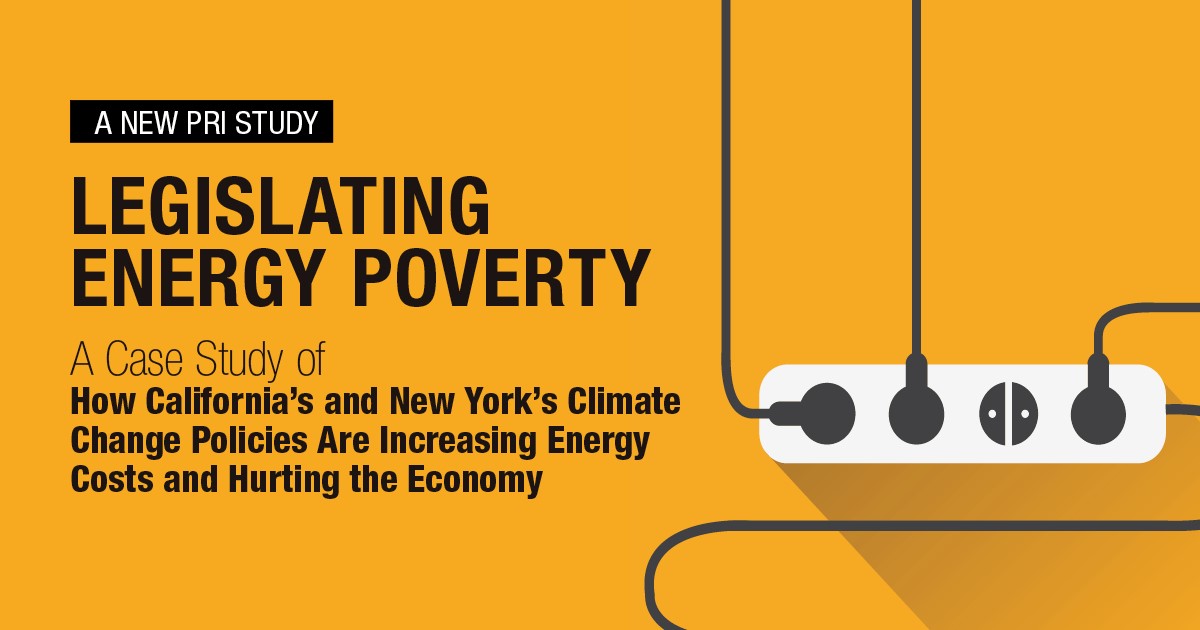All signs indicate that the Biden Administration is adopting California’s approach to global climate of prohibit, discourage, and subsidize.
The prohibit plank refers to punishing the politically disfavored energy sources of nuclear and natural gas. California has punished nuclear power generation by shuttering the San Onofre Nuclear Generating station in January 2012 and executing plans to shut down its last nuclear power plant (Diablo Canyon) in the not-so-distant future. There is similar pressure to shutter the state’s natural gas power plants, and environmentalists are pushing to reduce the consumption of natural gas by prohibiting its use for cooking and heating in all new buildings.
The discourage plank raises the costs of energy by imposing costly carbon taxes and cap and trade regulations on the economy. All of these policies increase the cost of fossil fuel produced energy with the explicit goal of discouraging its consumption.
The subsidize plank artificially reduces consumers’ costs for consuming favored energy products. They include net metering subsidies that force generators to purchase the excess energy produced by homeowners’ rooftop solar panels. The subsidy emerges because generators must purchase this energy regardless of need, and they must pay retail rates when they purchase this source of wholesale power. The subsidies also include direct payments to consumers of favored products such as electric vehicles and renewable fuel mandates that force consumers to use politically desired energy sources.
California’s top-down approach to global climate change is failing its environmental goals and imposes large economic costs on state residents, especially those living in poor, rural, inland, and minority communities.
Starting with the environment, state officials’ rhetoric creates the impression that California is a leader in reducing greenhouse gas (GHG) emissions. The data tell a different story. The decline in GHG emissions in California was around 35% less than the national decline between 2007 and 2017. This disappointing result is due, in part, to the state’s hostility to natural gas and nuclear power. The reduced output from these low/zero emission generation sources offset the increased generation from alternative technology sources.
In addition to the lackluster impact on global climate change, California’s approach has dire economic consequences. The state’s electricity prices are among the highest in the country, its gas prices are the highest in the country, and its cost of living is the second highest in the country. Thanks to these high costs, Californians are clamoring to leave the state. Between July 2018 and July 2019, it lost nearly 200,000 residents (on net) due to people migrating to other states such as Nevada and Texas.
Despite the documented adverse consequences, the current evidence indicates that the Biden Administration wants to implement the California approach. Whether it is canceling the Keystone XL pipeline or obstructing new permits for oil and gas projects on federal lands, President Biden has already implemented California’s prohibition plank to the detriment of thousands of jobs already lost. It is unlikely that this decision will be an outlier.
California’s experience is a cautionary tale for the Biden Administration. Attempting to manage the energy sector from the capitol is a recipe for unaffordable energy, meager economic growth, and unimpressive reductions in GHG emissions. Unfortunately, if the early actions of the Administration are prologue, we will be relearning these lessons on a national scale.
Dr. Wayne Winegarden is senior fellow in business and economics at the Pacific Research Institute, and director of PRI’s Center for Medical Economics and Innovation.

